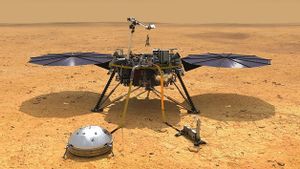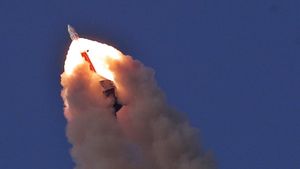JAKARTA - NASA has again given the mission that the Perseverance rover robot will take on Mars. This decision was taken after last Wednesday creating a storage depot and placing the samples he collected there.
The location of the storage depot is in Three Forks, an area in the Jezero Crater. The canister containing the Martian rock is safely stored there and will be retrieved by the next mission.
Perseverance has been collecting samples from Mars since arriving there in February 2021, and then putting them in storage last Wednesday. NASA's Jet Propulsion Laboratory (JPL), which oversees the rover's mission, called it one small drop for humanity.
One small drop for humankind.@NASAPersevere has deposited the first of several samples onto the Martian surface! The #MarsSampleReturn mission could deliver some of these samples to Earth for in-depth analysis. https://t.co/epa4Be5oId pic.twitter.com/n7Cf9DfrIu
— NASA JPL (@NASAJPL) December 22, 2022
According to JPL, the first samples that were in the storage depot were a limestone-sized igneous core unofficially called Malay, collected from a region of Mars' Jezero Crater called Séítah.
Over the next two months, Perseverance will place nine more titanium tubes in the same location. To anticipate unwanted things, the explorer robot has stored duplicate samples of each sample left at the depot.
This sample collection includes a mission dubbed Mars Sample Return to Earth, scheduled to begin in 2023. Perseverance will attempt to deliver its samples to NASA's robotic lander, Sample Recovery Helicopters, which are designed after the space agency's Mars-based Ingenuity probe.
SEE ALSO:
The lander will then use its robotic arm to move the canister to a containment capsule atop the small rocket. This rocket will launch into the skies of Mars and deliver the collection to a spacecraft, which will transport it to Earth.
If Perseverance is unable to deliver the sample, it will fly to the depot to collect the sample from there.
Once they reach Earth, the samples will undergo detailed analysis to help learn more about how Mars evolved, and determine whether or not microbial life existed there.
Such discoveries could also help scientists learn more about how life developed on Earth.
The English, Chinese, Japanese, Arabic, and French versions are automatically generated by the AI. So there may still be inaccuracies in translating, please always see Indonesian as our main language. (system supported by DigitalSiber.id)


















